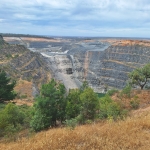SERBIA: One-Dollar Steel Mill Exposes Cracks In Privatisation
For the first time in its history, Serbia has bought back a company sold to a
foreign investor almost ten years ago, for the symbolic price of a single dollar.
But while the purchase has stirred a sense of national pride, it is hardly a
success story for the Balkan economy; rather, it has exposed the failure of a
decade-long effort to privatise the national economy.
Serbian Prime Minister Mirko Cvetkovic signed the resale deal on Feb. 1 with representatives of U.S.
Steel, the first private enterprise to enter the country after the downfall of former leader Slobodan
Milosevic in 2000.
Back in 2003, U.S. Steel bought up the bankrupt Sartid steel mill in the eastern town of Smederevo for
33 million dollars.
Six months ago, the company announced it was leaving Smederevo due to years of underperformance.
The plant had been operating well under its annual capacity of 2.4 million tonnes since 2007 and,
together with its sister factory in Slovakia, made a loss of 65.5 million dollars in the first three quarters
of 2011.
The Serbian Government has been consistently down-playing the negative effects of the embarrassing
situation by promising to keep all 5,500 mill workers at their jobs.
"We'll find the money either by borrowing from banks or redistributing budget allocations," Cvetkovic
vowed, while admitting that the annual cost of keeping the mill running could reach 100 million
dollars, a bill the struggling economy can ill afford to pay.
Critics say the sale was a desperate move ahead of the May 2012 general elections that the regime
hopes to win, but do not believe the government has the capacity to save the dying mill nor the workers
who depend on it for a livelihood.
On the verge of recession?
Perhaps the only positive outcome of the steel mill purchase is that it has shone a harsh light on the
last 12 years of privatisation in Serbia, which began in earnest after Milosevic was forced to quit office
back in 2000 and have resulted in some 20 billion dollars worth of foreign direct investment (FDI) in
the country.
Privatisation has been described by each successive government since 2000 as Serbia's "only option"
for economic recovery, but recent studies and analyses prove that it has devastating results that often
lead to recession and possibly even the collapse of national economies.
"Some 3,000 firms were privatised since 2001," Danijela Rajkovic of the Social-Economic Council of
Serbia, an entity comprised of experts from the labour ministry and representatives from all major
trade unions in the country including Nezavisnost (Independence) and the Union of Autonomous
Syndicates of Serbia (SSSS), told IPS.
However, she said that the Privatisation Agency has annulled roughly 600 contracts so far, due to a
range of "irregularities", including certain companies defaulting on payments, and both foreign and
Serbian buyers going bankrupt as a result of poor sales or underproduction.
She told IPS that nations in 'transition' (political or economic) were responsible for between 10-15
percent of annulled privatisation contracts worldwide.
"Serbia stands at the top with an average of 20 percent; in the industrial sector, almost a third (of the
contracts) were annulled," Rajkovic said.
According to the Council's study on the impacts of privatisation in Serbia - the only
comprehensive report compiled on the subject - more than 500,000 people have been left jobless since
2000, impacting over a million of these workers' dependants.
This is particularly significant for a nation whose total labour force is just 3.2 million people and where
the unemployment rate stands at a staggering 23.7 percent.
Svetlana Mancic an official of the SSSS, told IPS that only a third of the surviving private firms - just 800
in total - are economically active today, while "only 20 percent of them pay regular salaries to their
employees."
Experts agree that hastily implemented and unregulated privatisation is only partially responsible for
Serbia's current unemployment epidemic.
Serbia's trade relations with economies hamstrung by ripple effects of the 2008 global economic
downturn has placed additional strain on the developing country.
Some 500,000 people lost their jobs in the 2008-2011 period, due to global economic contraction.
"The aim of transition was not only the sale of companies to private owners," economic analyst Misa
Brkic told IPS. "There was also the need for a new economic climate and the development of industrial
policies to support certain areas of production."
Sadly, that did not happen. Instead, Serbia has experienced a slowing down of its economic
partnerships with Greece and Italy and is now on the brink of recession itself, he said, adding that
growth forecasts for Serbia have fallen from 1.5 to 0.5 percent this year.
Brkic, along with many other experts, believes that Serbia might face recession as early as June of this
year.
He stressed that negative growth of gross domestic product (GDP) for two quarters in a row would bode
very badly for the country.
- 204 Manufacturing



